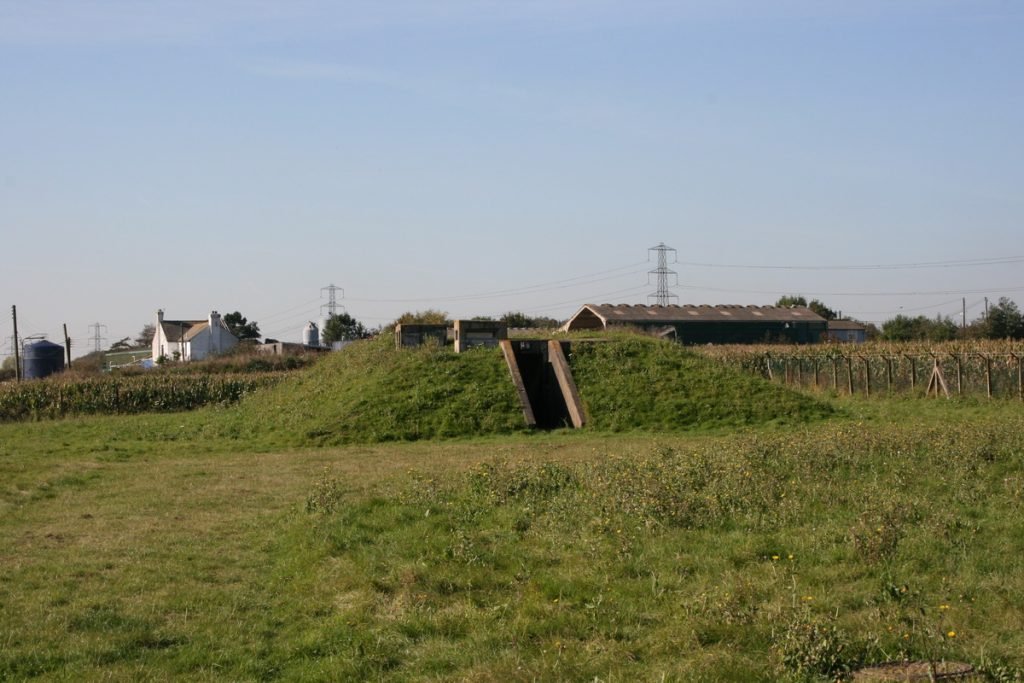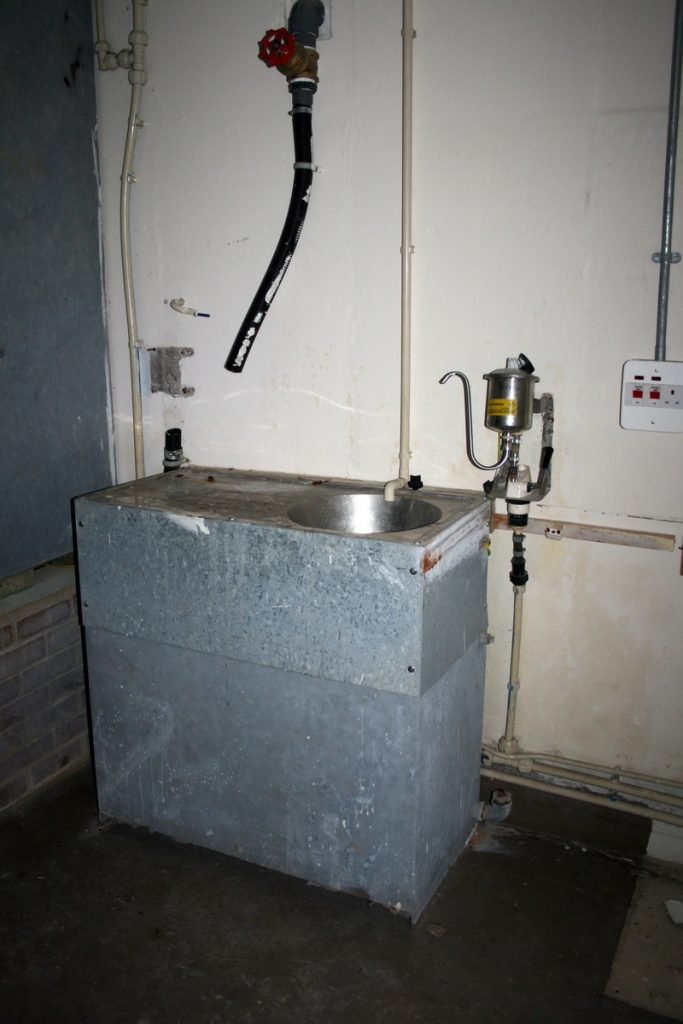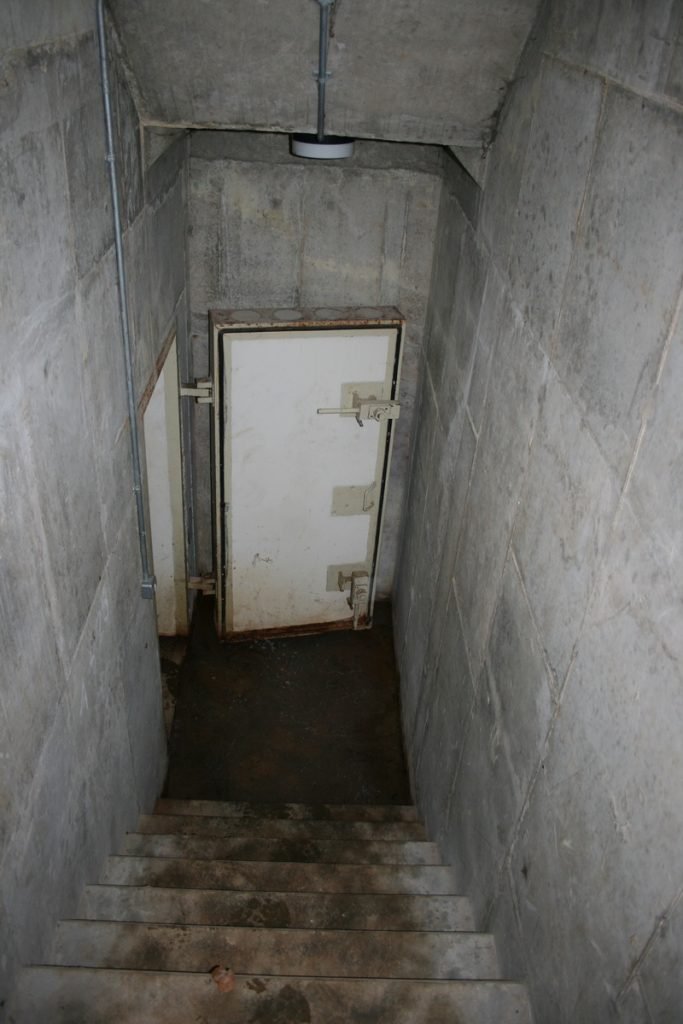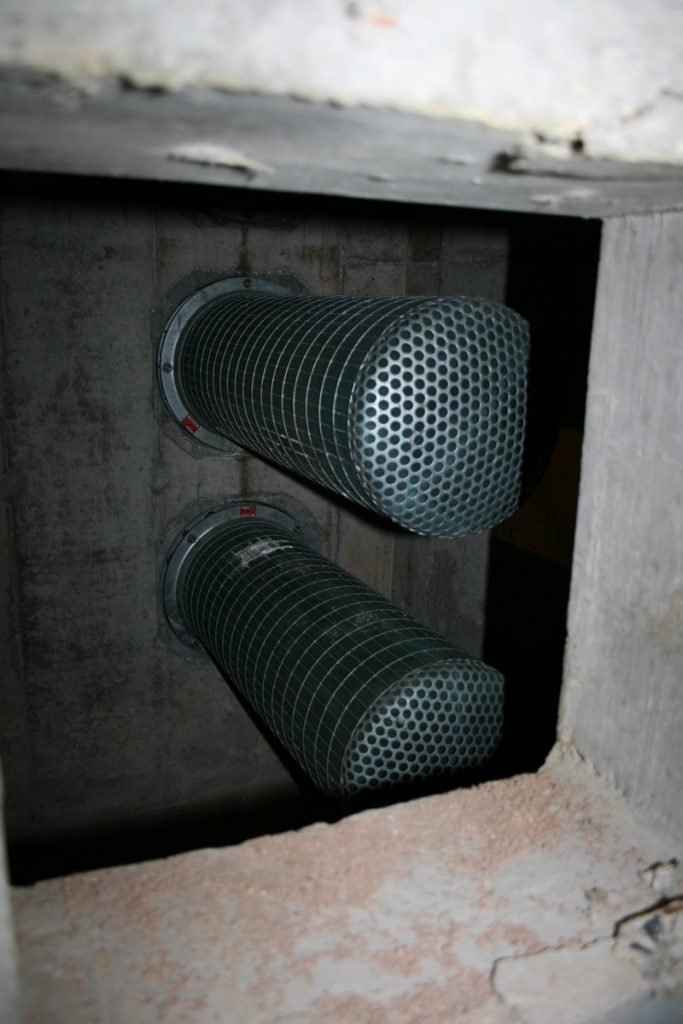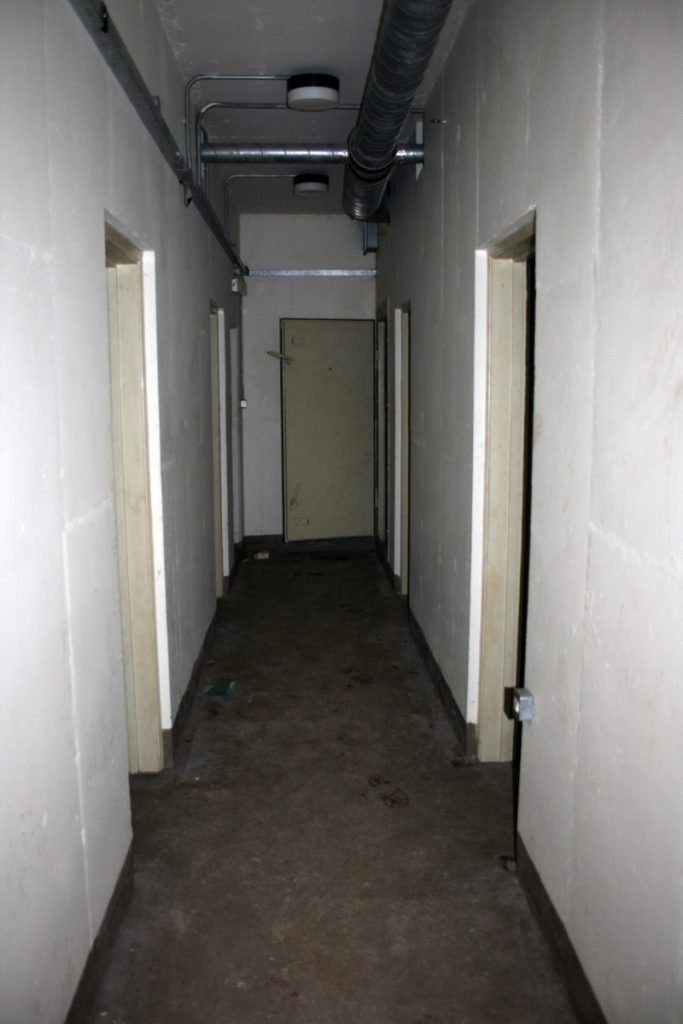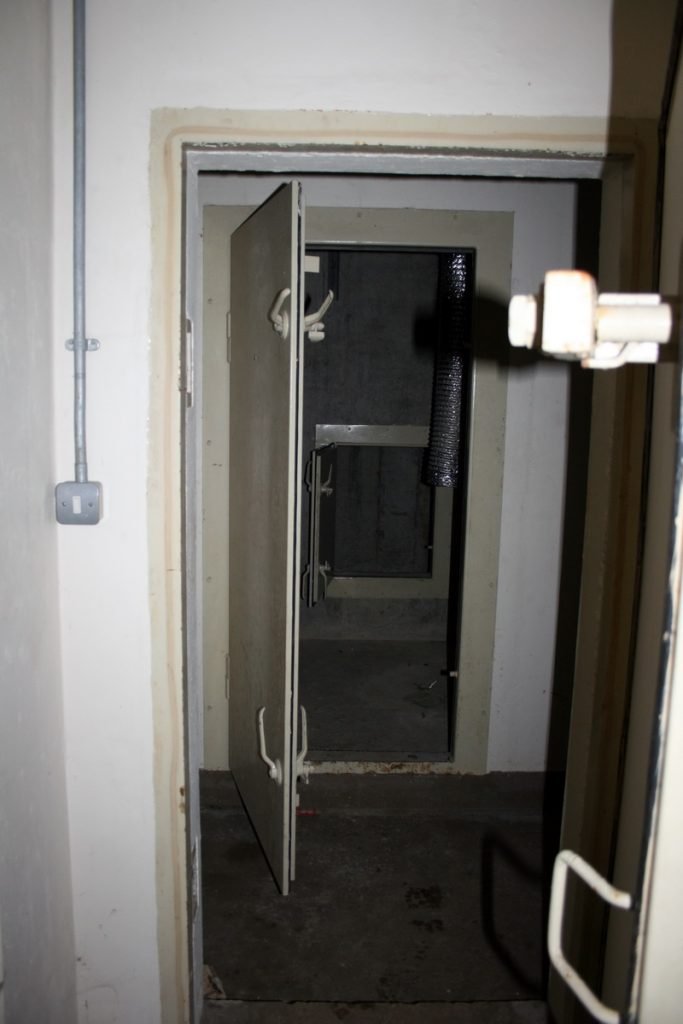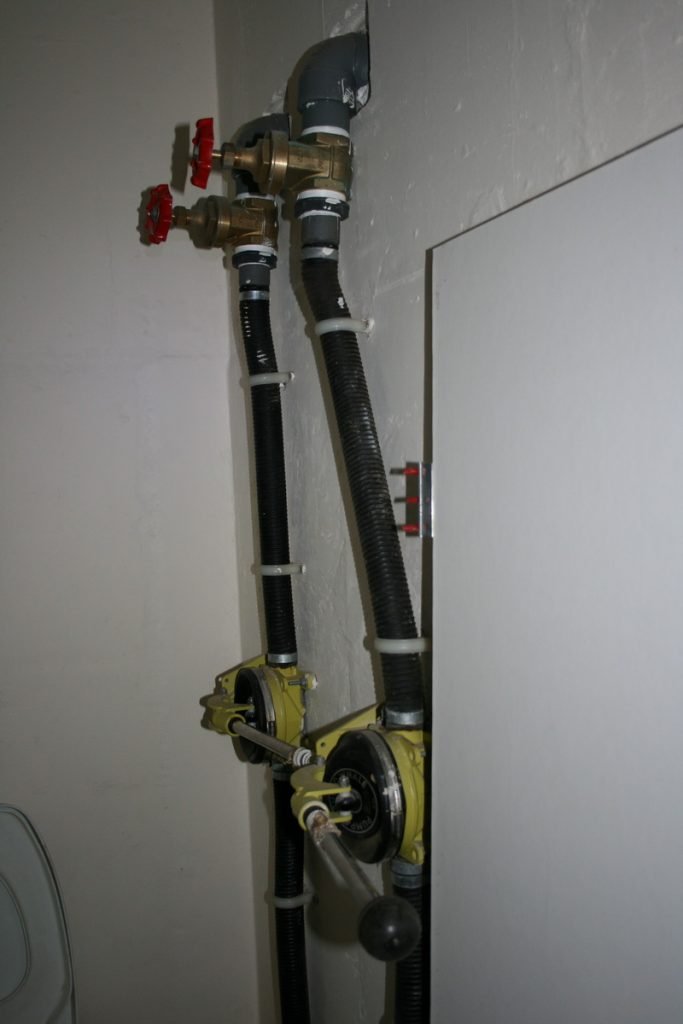Southern Water Control Centre
During the early 1980s with the Cold War still posing the possibility of a nuclear attack, Southern Water built three emergency control centres in their area of southeast England; one in Sussex, one in Hampshire and the third in the Medway area of Kent. This third bunker utilised an existing disused covered reservoir, and although the structure was completed, it was never fitted out or used. This was probably due to the easing tensions between East and West by the late eighties and the eventual collapse of the Soviet Union.
Like many bunkers, the Medway emergency control centre first appears as a mound of earth; all that is visible from the surface are two short ventilation towers and the recessed entrance. On the opposite side to the entrance is the emergency hatch.
After entering through a wooden door and walking down a flight of stairs, it soon becomes apparent this building was designed to cope with the aftermath of a nuclear attack as the foremost consideration. At the bottom of the stairs is a steel and concrete blast door designed to withstand the massive blast wave and incredibly high temperatures that would have been generated by a nuclear detonation. Through this massive door is the decontamination room, essential for removing radioactive material deposited by fallout. The decontamination room has two more blast doors for further protection; one leads to the generator, and the second to the airlock. Walking through the generator room leads to the air intake and filtration room. Air from outside would have come through this intake pipe and been filtered again because of fallout. In the adjoining room is the exhaust and filters.
On leaving the airlock, the main corridor then leads off, with doors to five other rooms; the kitchen and toilets to the right, store and dormitory to the left and at the end of the corridor is the main control room. On the far side of the control room is the emergency exit hatch; the ladder was never put in place. In the control room, itself was the Faraday cage. Named after Michael Faraday, who spent his life studying electromagnetism, the Faraday cage would have been essential to protect electrical circuits within the bunker. Nuclear detonations give off a massive EMP or electromagnetic pulse. This EMP has the ability to severely damage any unprotected electrical equipment and anything connected to electrical cables, rendering them useless. Equipment essential to the functioning of the bunker would therefore be housed in the Faraday cage. EMPs can reach out much further than the blast radius, so even if the control centre was several (more than 15) miles away from a nuclear detonation, it is highly likely that EMP would still reach it.
Location: Gillingham
Condition: Good
Date Of Visit: 04/10/07
